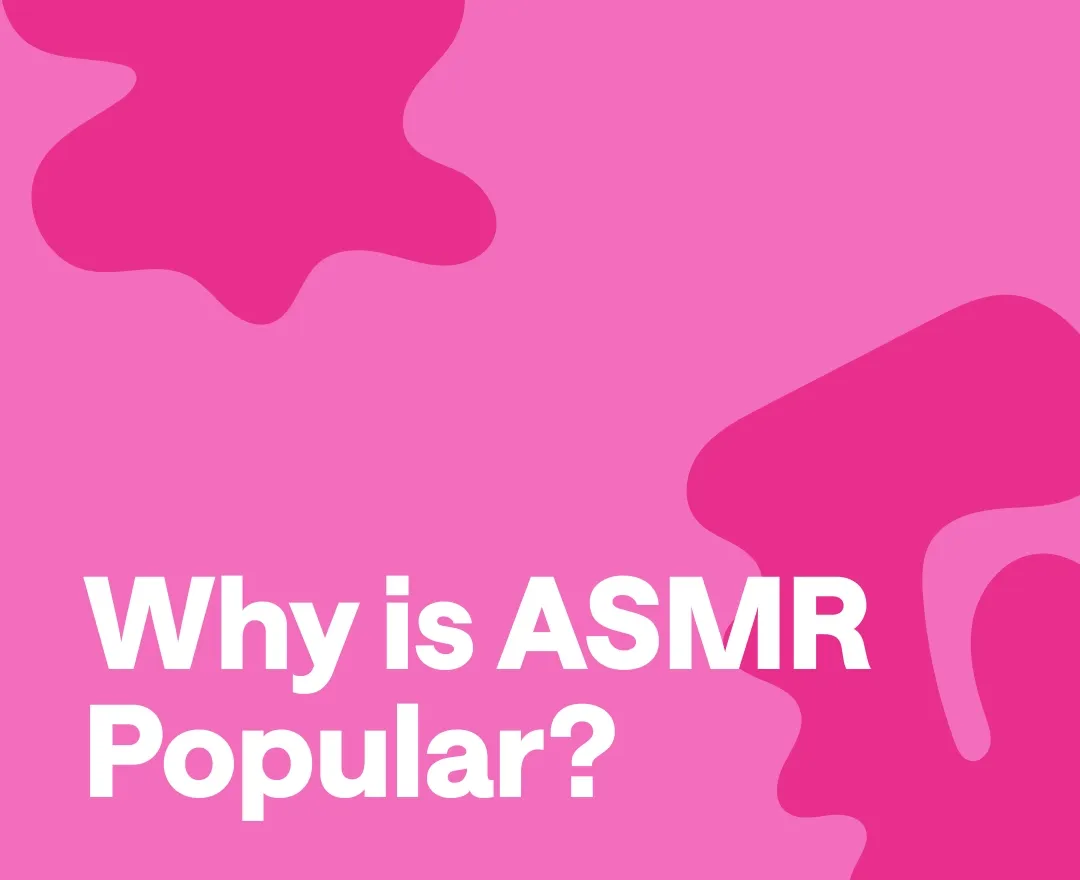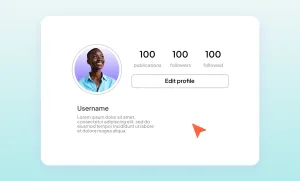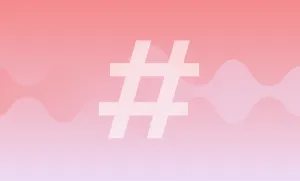Did you know there’s an entire category of videos online dedicated to making grown adults feel all tingly? It's called ASMR, and it’s equal parts bizarre and brilliant.
If you’ve ever heard the term ‘ASMR’ and wondered what it means or are curious about getting into this content genre, keep reading because today we’re exploring all things ASMR.
What is ASMR?
Have you ever experienced a nice tingling sensation after hearing a particularly satisfying sound or when someone plays with your hair? Well, that’s ASMR. And if you haven’t, you’re not alone, as only around 20% of people experience ASMR.
For the uninitiated, ASMR stands for ‘autonomous sensory meridian response,’ referring to the tingling sensation people feel on their scalp, head, spine, or other body parts triggered by specific sensory stimuli. People who seek out ASMR claim it helps them relax, reduces their heart rate, and even helps them sleep.
And what is ASMR content?
Many see ASMR videos as slightly kooky, typified by creators (usually women) whispering into their microphones or tapping their nails on seemingly random objects.
But ASMR content is far more than that, and it's got more to do with health than you might think. ASMRtists aim to help viewers relax and sleep better by activating the feelings of ASMR through visual and auditory stimulation using techniques known as ‘triggers.’ ASMR triggers range from the tapping and whispering closely associated with the genre to more niche triggers like close personal attention simulated through role-play.
Are ‘brain-gasms’ a passing trend?
This phenomenon first gained traction online in 2010, when the initialism ‘ASMR’ was coined, and has since grown into a booming content industry.
According to Google, YouTube searches for “ASMR” grew 200% YoY in 2015, with top ASMR videos garnering over 16M views at the time.
In the almost decade since Google’s study, ASMR content has shown no signs of slowing down. Considering stress levels are higher than ever before, it’s no surprise people are looking for new ways to relax and switch off.
And ASMR content creators — or ASMRtists — are more than happy to help. Far from a passing trend, ASMR has proven to be a very lucrative niche for those who have won a loyal audience who tune in every day to get their dose of soothing, brain-fizzing, neck-tingling sensory stimulation.
How you can become an ASMRtist
Want to try your hand at making ASMR content? We don’t blame you! If you want to stand out in this zen yet saturated market, you need to up your game. Here’s how.
1) Find a niche to create content in
There are many people out there making great general ASMR content, but you’ll likely experience better traction by getting really good at one specific genre of trigger. For example, ASMR Bakery, which has around 2M subscribers on YouTube, specializes in long-form, no-talking ASMR, while Latte ASMR makes personal attention videos with incredibly high production values.
2) Get creative with your triggers!
Tapping and whispering are essential ASMR triggers, but creators who keep their audience engaged know how to get creative. The most innovative ASMR creators are always looking for new and exciting triggers, testing out household objects or unique personal attention role-plays. For example, creator SOFI ASMR racked up 10M views on TikTok with her ASMR thunderstorm video, which used a mike, tin foil, and an effervescent tablet.
3) Try different formats
There are many different ways to ‘do’ ASMR. Some viewers love to watch their favorite creators take requests on TikTok Live, while others prefer to watch hours-long trigger compilations on YouTube. Experiment to find what works for you and your audience!
4) Invest in your setup
Purchasing a semi-decent microphone is a must for getting started with ASMR. But ASMR isn’t just about audio; it’s about visuals, too. We suggest investing in an aesthetically pleasing setup with soft lighting, a recognizable backdrop, and, of course, plenty of cool triggers.
How to make ASMR videos with Podcastle
ASMR videos often run long and rely heavily on consistent, high-quality sound. That makes editing a key part of the process—but it can also be one of the most time-consuming. Many ASMR creators today are turning to AI video editors to help them work faster without sacrificing the calming, polished feel their audience expects.
With Podcastle's AI video editor, you can simplify a lot of that work. It’s designed for creators who want to produce longform audio and video content without getting stuck in a slow, manual workflow. You can use AI to enhance sound quality, fine-tune voiceovers, and smooth out the editing process from start to finish.
Here’s how to use it for your next ASMR video in just 3 simple steps:
1. Upload your ASMR video or audio
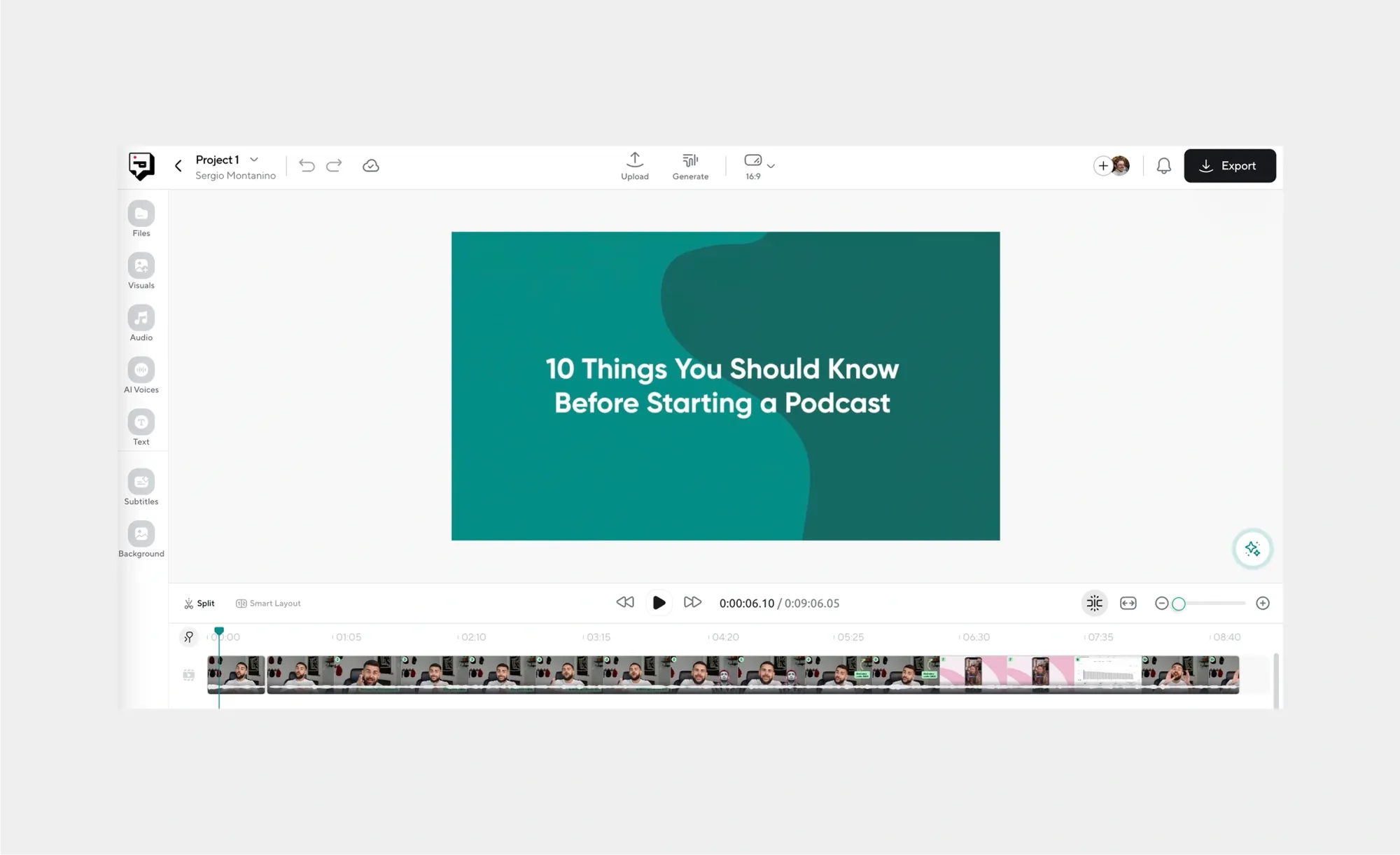
Start by uploading your raw footage to Podcastle. You can work with video or audio, depending on your style. Just drag and drop your files into the editor, and you can start trimming and tweaking while everything finishes uploading in the background.
2. Use AI tools to fine-tune your content
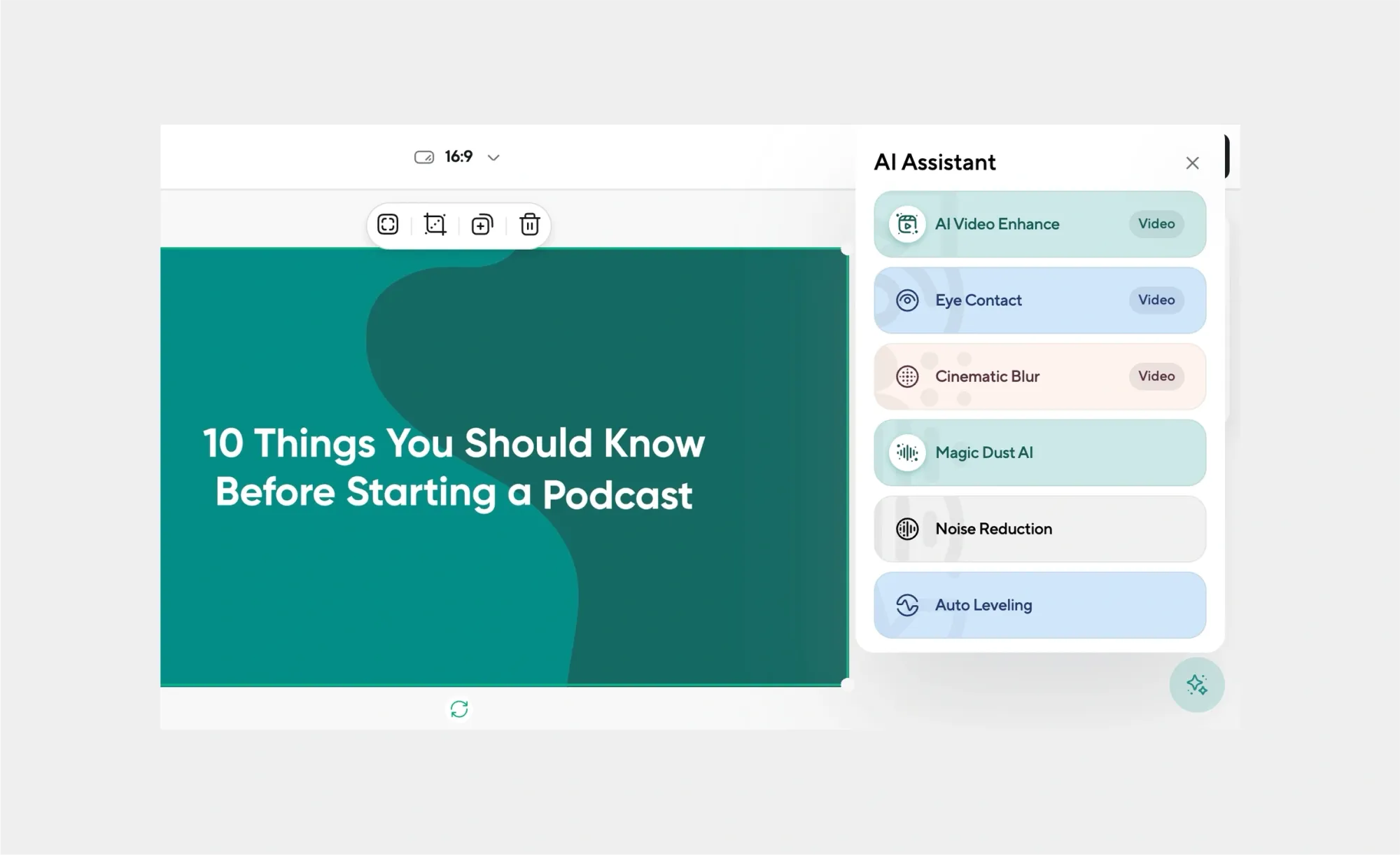
Podcastle’s built-in AI helps you polish your ASMR with ease. You can clean up background noise, enhance the sound quality, and even remove filler words automatically if you’re doing any soft speaking or whispering. For video, you can swap in a calmer background or keep things feeling consistent with color and lighting. You can also layer in a soft AI voiceover to create guided content or mix with your own recording.
3. Export and publish
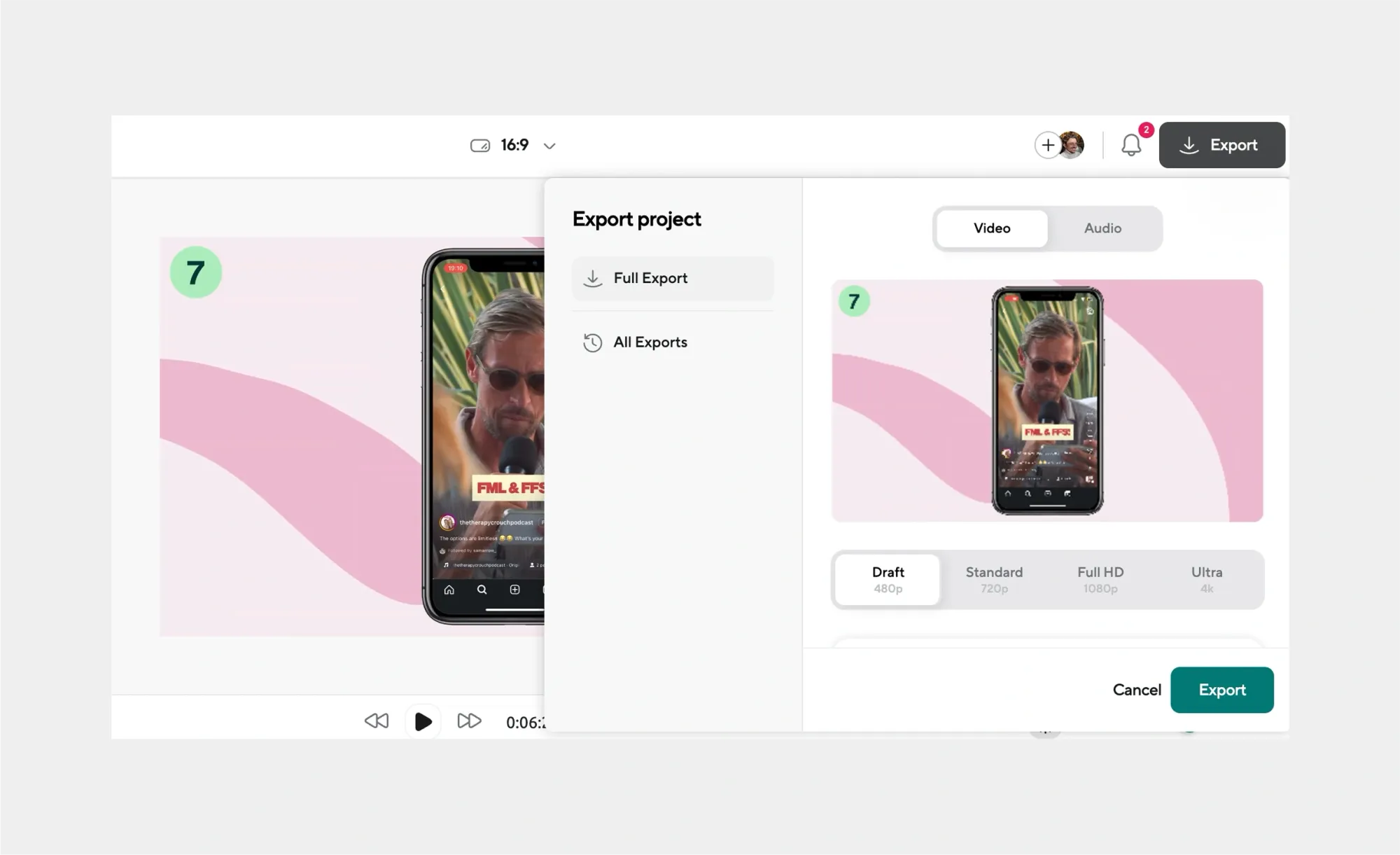
Once your video or audio feels right, just export it in the format you need. Whether you’re posting on YouTube, TikTok, or uploading to your own site, your ASMR file will be ready to go, and ready to help someone unwind.
FAQs
What is ASMR roleplay?
ASMR roleplay is a style of content where the creator acts out a scenario designed to trigger a calming or tingling response. Common examples include pretend spa visits, doctor checkups, or personal attention scenes. The focus is usually on soft speech, gentle movements, and detailed sound to help the viewer relax.
Is ASMR good for ADHD?
Some people with ADHD find ASMR helpful for calming their thoughts or winding down before bed. It isn’t a treatment, but the repetitive, soothing nature of certain sounds can create a sense of focus or stillness that’s often hard to reach otherwise. Results vary, but many find it worth trying.
How long does ASMR last?
The tingling sensation linked with ASMR usually lasts a few seconds to a few minutes at a time. Some people experience it in short waves, while others feel it throughout an entire video. It really depends on the person and the type of trigger.
What personality types like ASMR?
People who enjoy ASMR often describe themselves as more introspective or detail-oriented. Many are drawn to gentle, slow-paced content. That said, ASMR appeals to a wide range of people—from those looking for sleep aids to others who simply enjoy the sound design.
Do highly sensitive people like ASMR?
Yes, many highly sensitive people are drawn to ASMR because they tend to be more responsive to sensory input. The soft sounds, calm pacing, and subtle movements often create a soothing effect. For some, it offers a quiet way to unwind after sensory overload.
